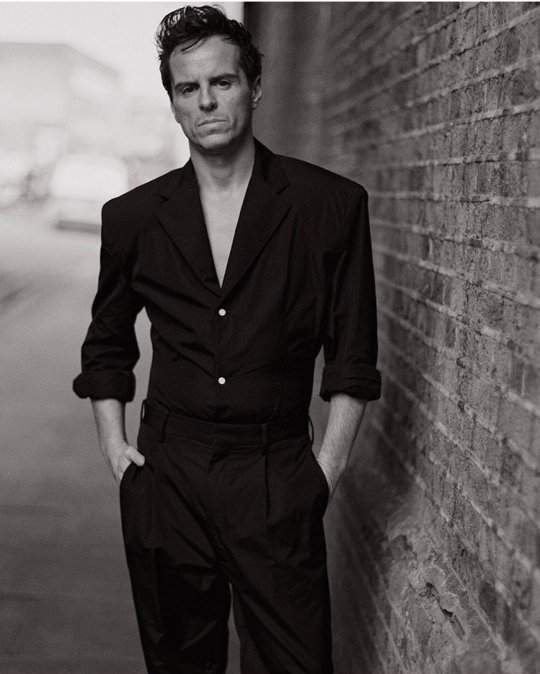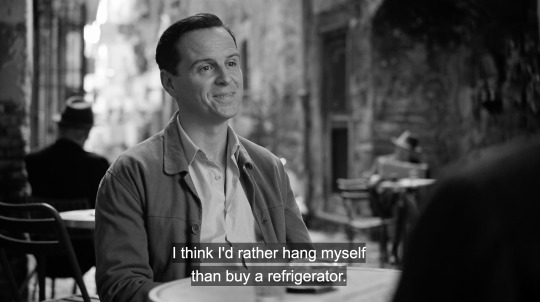Text
“He [Tom Ripley] will always get away with it,” said Patricia Highsmith in an interview once. Tom Ripley—Highsmith’s most famous character, and the main protagonist of five of her novels—is a man, whom readers both love and hate. Through Highsmith’s prose, Ripley has made violence, theft, and murder into nothing more than a domestic affair, or sipping on an espresso in Rome, quietly, calmly, innocently observing the people that pass.
Highsmith’s novels—especially The Talented Mr. Ripley, first published in 1955—have been the subject of many film adaptations. In 1951, Alfred Hitchcock adapted Strangers on the Train; René Clément’s Purple Noon (1960) was an adaptation of The Talented Mr. Ripley; Wim Wenders adapted Ripley’s Game with his film, The American Friend (1977); and Anthony Minghella made The Talented Mr. Ripley (1999). The latest in adaptations of Highsmith’s Ripley novels is simply titled Ripley (2024), directed by Steven Zaillian, with Andrew Scott as Tom Ripley. The series is streaming on Netflix, and it consists of eight episodes with plot and action mainly taken out of Highsmith’s The Talented Mr. Ripley.
Ripley is unlike other adaptations of Highsmith’s novel. Shot in black and white with high contrast, this is a cinematic expression of moodiness, ethereal jazz, and domesticity of murder. Given the fact that this is a series and not a stand-alone film, Zaillian took the opportunity to open up the doorways into the soul of Tom Ripley, and really focus on what makes this pleasant psychopath tick. More importantly, why do we, as both readers and audience, like him? Why do we want him to literally get away with murder, yet at the same time, we hope that justice will be served? Is it because Tom Ripley is nice? Highsmith is essentially asking whether evil comes under the guise of niceness and pleasantness, and illuminates the fact that evil monsters are not always outwardly frightening.
The series opens with Tom Ripley in New York. We find that he is living a banal and mediocre life of con artistry. He lives in a crummy apartment, populated by other single and destitute men. He spends his days forging checks, masquerading as a doctor or a businessman, offering services to people, and then demanding that they pay bills that were already paid. There is always a chance that he may be found out, and so he lives in the shadows.
Without a doubt, Tom is stuck in a con man’s rut. An offer comes through that he cannot refuse. Herbert Greenleaf enlists Tom’s help to talk some sense into his son, Dickie (played by Johnny Flynn), and convince him to leave Europe and come back to America where he can work and live respectably. It’s not really clear if Tom and Dickie were ever even friends but given the fact that Tom is hiding from the law and lives in deplorable conditions, a trip to Italy with all expenses paid, including salary, sounds wonderful.
Andrew Scott captures perfectly Tom Ripley’s alienation, which we immediately see in New York as he’s riding the subway. Once he arrives in Italy, this is apparent even more. When he gets off the train in Naples, people are running into him as he stands on the station, wondering which direction to take. Italians are unhelpful, and he doesn’t know how to get to Atrani (which is where Dickie is living), except that some makeshift taxi brought him to what may or may not be a bus station.
His arrival in Atrani brings even greater alienation. He barely speaks any Italian, and an old man at the post office is not interested in helping him either. We have no choice but to feel compassion toward Tom—an American lost in a foreign land. Yet despite this, he is still trying to be nice and pleasant.
Dickie Greenleaf is living in a huge villa that overlooks the sea. Clumsily, he introduces himself to Dickie (who is accompanied by his girlfriend, Marge, played by Dakota Fanning), who doesn’t really remember him. But after Dickie finds out the real reason why Tom is in Atrani, he finds the entire situation amusing. Resentful of his parents’ attempt to bring him home to America, Dickie decides to show Tom a good time in Italy. Naturally, Tom accepts.
Marge is immediately suspicious of this interloper. Dickie doesn’t seem to be aware of Tom’s nuanced behavior but Marge senses there is something odd about Ripley. At some point, she wonders if Tom is “queer,” but she concludes that he may not even be sexual enough to have an orientation. This is a fair assumption—Tom is not an erotic character, although he does embody a subterranean homoeroticism. His blandness would indicate that he has no lust for life, no thrust toward achievement, or passion. Yet, his immorality and coldness clearly have an aim.
Tom Ripley is not merely a petty thief. When Dickie tells him that it’s time to move on, and that his attempt at bringing him back home has failed, Tom brutally murders him. This is the beginning of aggressive shapeshifting for Tom. He proceeds to assume Dickie Greenleaf’s identity and money by playing a game of evasion. Nobody can catch him because with some he pretends to be Dickie, while with others he is still Tom Ripley.
Marge was always suspicious of Tom. She continues to harbor uneasiness and suspicion, but Tom’s politeness and seeming care for her results in trust, however fragile and temporary it may be. Paradoxically, it is Dickie’s lack of presence that creates a momentary closeness with Tom. She later comes to accept the falsehood that Dickie killed himself.
Dickie’s friend, Freddie Miles (in a rather strange casting of Eliot Sumner, who is British, gaunt, and gender-confused—a complete opposite of Freddie in the book) suspects that Tom has killed Dickie. In order to silence him, Tom kills Freddie with several blows to the head with an ashtray. He awkwardly cleans the blood—there is no sense of murder’s precision. Tom Ripley is just a guy who doesn’t even know how to handle basic house chores, except that for him, a murder is just another basic house chore.
Is anything planned or premeditated in Tom’s actions? He appears to be a haphazard killer, yet the executions of his immoral actions suggest malevolent intentions. He does indeed willingly choose to be a shapeshifter, even if he is a mystery to himself. This is the enigma of Tom Ripley—Highsmith has created a psychopath who is clumsy and dull; a man who was a kid that nobody wanted to play with, who was mocked and abandoned, a kid who wants to be someone else in order to feel accepted. He is an unavoidable annoyance, a kid that hangs on to your every word in admiration and prostration, yet also hates you if you deviate from his understanding of how the relationship ought to proceed.
Double Life of Patricia Highsmith
Patricia Highsmith did not like being called a “crime writer,” and for a good reason. The Ripley novels may include crimes but they are hardly potboilers or mysteries. She did not set out to write a mystery book, but a novel about a man, who is difficult to catch, especially metaphysically.
Just like Tom Ripley, Highsmith embodied a duplicity but not in a corrupt, psychopathic way. Her life was a series of metaphysical masks; evading one existence, entering another, burdened by the family history, and concealing a secret of her lesbianism, while at the same time disliking women and preferring a non-sexual company of men. By no means was Highsmith the psychopath that Ripley is, but she was enigmatic and difficult to capture.
Born and partially raised in Texas, Highsmith’s family life was mired in darkness, yet as Joan Schenkar writes in her book, The Talented Miss Highsmith: The Secret Life and Serious Art of Patricia Highsmith, “Emotional memory was what lit up Pat’s work and darkened her days, and emotional memory rarely wears a watch or walks a straight line.” This certainly couldn’t be more true for Highsmith.
She spent most of her life in Europe, living in France and then in Switzerland. America had abandoned her in many ways. Not only were her books more popular in Europe, her own childhood was one of abandonment. Her parents divorced almost immediately after she was born. Her mother married another man, who was to become Highsmith’s stepfather, but this hardly brought stability into her life. In fact, her mother and stepfather decided to leave Texas and live in New York, abandoning young Patricia, who was partially raised by her grandmother.
She reunited with her mother later, but after she turned 18 or 19, it was time to be free. Throughout her life, Highsmith lived with the notion that her mother wanted to abort her and had attempted repeatedly to reach out to her mother and ask for love, only to be rejected again and again. Her mother had plenty to say about Highsmith not acting “like a lady,” and accusing her of being a lesbian. All of this and much more led Highsmith to completely sever her relationship (legally and otherwise) with her mother, and indeed Texas and America as well.
Highsmith was an immediate success in the literary world and she made a substantial amount of money as well so that she was able to be financially independent. Her relationships were obsessive and she moved quickly through love affairs, leaving many women confused and abandoned.
It’s hardly a surprise that Highsmith developed a sort of double life. Not only did she have to hide her sexual orientation, but given her family life, she most likely developed an armor that was rarely removed. In a way, this is what makes her similar to Tom Ripley. It would be a disservice to Highsmith to simply reduce her to one of her characters but her interest in such strange behavior, and creation of such a character to begin with gives us pause to reconsider who she really was (if that is even entirely possible).
“Obsessions are the only thing that matter,” she once wrote. “Perversion interests me most and is guiding my darkness.” Tom Ripley is obsessed but in a mild-mannered way. This is what makes him an intriguing character, someone we are repulsed by but at the same time, we cannot look away. It’s not exactly like witnessing a train wreck or some disaster but we do become voyeurs when we seek to look at Tom Ripley.
Despite the dull and forgettable personality, Ripley still represents the duality of the self. This is mirrored in Highsmith’s life. “No use looking for one’s self in a static condition,” Highsmith wrote, “surrounded by the things, attitudes, people one thinks of. … The living self is always in flux.” This is true of Tom Ripley as well. He is literally always in flux, always on the move, always escaping, and always becoming someone else other than himself. But who is he? A creator or a destroyer of his own life?
Netflix’s Ripley emphasizes these questions by creating a subtle metaphysical portrait of Tom Ripley, accentuating his paradoxical clumsy finesse. A theme that is pervasive throughout the series is Tom’s obsession with Caravaggio and his work. He goes from one church to another, one town to another, seeking Caravaggio’s paintings. He identifies with Caravaggio’s own violent and artistic life, a life that is both sacred and profane, filled with passion, murder, vendettas, and untimely death.
But this obsession in effect reveals Tom Ripley’s own inflated view of himself. He only sees what he wants to see. His lack of fear is unnerving. We seek human qualities in Tom but this only yields discouragement and irritation. He is different, a constant shapeshifter who is polite to the landlady but who drops Dickie Greenleaf’s dead body into the sea, and drags Freddie Miles’ corpse down the stairs of the building as if he is moving a piece of furniture. It is precisely this bizarre domestication of murder, theft, and duplicity that makes Tom Ripley an endlessly interesting character. “My obsession with duality saves me from a great many other obsessions,” said Highsmith. Tom Ripley became Highsmith’s obsession, and the intricate relationship between the author and her creation is yet another aspect of why Tom Ripley continues to fascinate us.'
2 notes
·
View notes
Text
youtube
"It was fun that I get to be one of the characters that sees Tom Ripley for who he kind of really is from the beginning, and we get to have these scenes where we're able to go toe-to-toe with each other where a lot of the other characters are kind of - he's able to manipulate much more easily, whereas mine it's a bit harder to do. So I enjoyed getting to play with those dynamics with Andrew Scott, and you know, just really explore the human being and the complexity of people and of these characters."
4 notes
·
View notes
Text

Edvin Ryding 📸by Hedvig Wiclander/IG
41 notes
·
View notes
Text
Kevin McCarthy and Andrew Scott discuss Ripley, out April 4th on Netflix.
TikTok - kevinmccarthytv
132 notes
·
View notes
Text

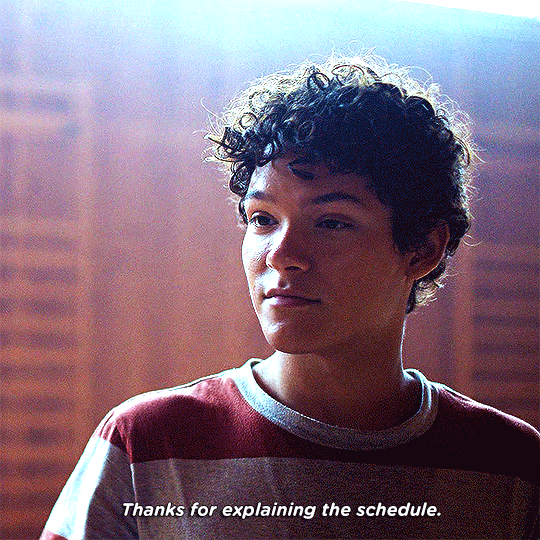
I mean that almost no one else is going to be here then. If I were to stay here would you like to keep me company? Just you and me.
#simon sassy eriksson#perfect response#make the prince work for it#as you should#their s1 dynamic was the best 🔥#young royals#wilmon
61 notes
·
View notes
Text

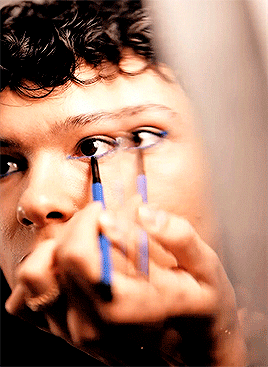




OMAR RUDBERG for YSL beauty ✨
117 notes
·
View notes
Note
🧡
🧡: What is a popular (serious) theory you disagree with?
That Wille should give up his title.
5 notes
·
View notes
Text
Ok hear me out, I had a realisation. At the start of the series, Simon is quite sassy and doesn’t bite his tongue, but as the series progresses, that side of him fades away, until... the final scene. His last line 'what the hell do you think?' is so significant because it's the first time he's been sarcastic in ages. In that last moment, Simon is finally back to his true self.

398 notes
·
View notes
Note
That suit looked so gorgeous and his skin is flawless!!! 🤩
He was glowing! Love that the pinstripes were glittery like his necklace and that he went shirtless after that disastrous interview. Well played.

33 notes
·
View notes
Text
Omar at the Swedish Beauty Awards



25 notes
·
View notes
Text


ANDREW SCOTT
RIPLEY II: SEVEN MERCIES
1K notes
·
View notes
Text

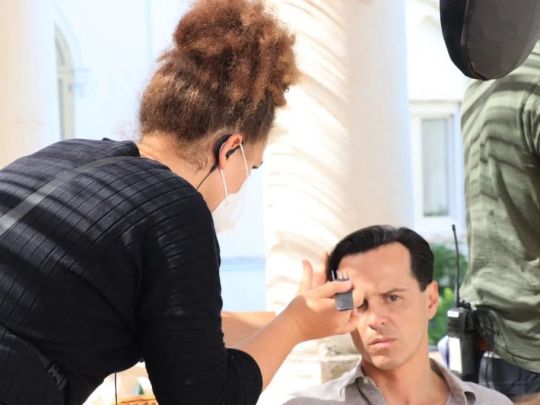









Behind the scenes production images by various Ripley crew members.
It's so weird seeing them in color. It makes me glad they went for black and white.
85 notes
·
View notes
Note
I think she will talk about the deleted scenes in the other parts. Even if I don’t know if I want to actually know what they decided to cut bc what if it’s actually cute scenes? I will commit crimes (in the sense that I will break and enter whatever place they are keeping the footage in and steal it)
You are right. The deleted scenes have kinda lost their magic after it's apparent we will never get to see them. I am not sure I am ready to hear about another cute scene that's lost forever.
I still want to see the scene from s1 of Simon, Ayub and Rosh discussing the sleepover 😭
4 notes
·
View notes
Text
Kristina: it's been a brutal year
Wille: I know right btw I'm abdicating
3K notes
·
View notes
Text
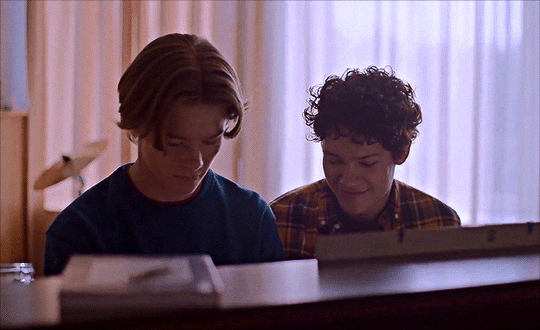





Wilhelm & Simon 1.03 || 3.03
Bonus:
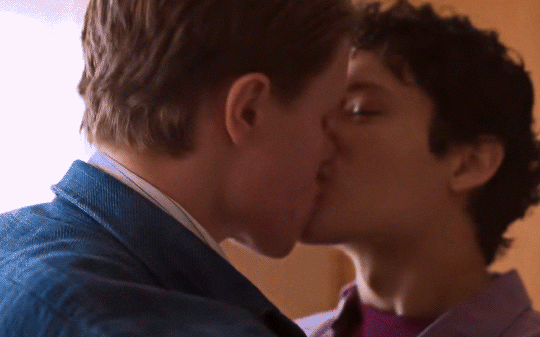
418 notes
·
View notes
